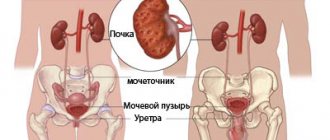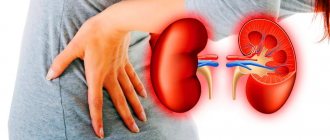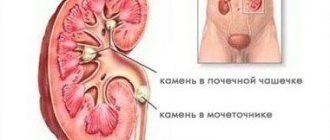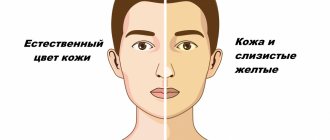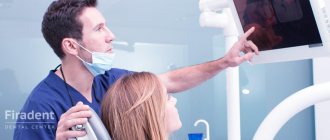General information about the disease
Pyelonephritis is an inflammation of the kidneys of a bacterial nature. Almost every second newborn is susceptible to this disease, because the kidneys are not yet properly formed at the time of birth. Children who underwent intensive care immediately after birth are also at risk.
This disease affects the pyelocaliceal system and the renal parenchyma (internal tissues). It is detected mainly in children under seven years of age.
The main causative agent of pyelonephritis in a child is Escherichia coli , which settles in the urinary system. Also, the disease is often provoked by coccal infection. Source: A.A. Kozlovsky Pyelonephritis in children (literature review) // Problems of health and ecology, 2009, pp. 60-66
Important ! Parents should know and promptly identify signs of pyelonephritis in their child. The disease is dangerous in its chronic form and even fatal.
Don't forget about prevention
Recommendations for the prevention of pyelonephritis in children come down, first of all, to the general strengthening of the child’s immunity and taking care of his health:
- Early training of boys and girls in basic personal hygiene skills, careful observance of the cleanliness of the child’s body.
- Compliance with the drinking regime and healthy nutrition of the baby.
- Timely trips to the toilet.
- Procedures for hardening a child.
- Maintaining the baby's sleep and wakefulness schedule.
- Avoiding child hypothermia, drafts, cold air conditioners and wearing clothes that are too light.
It is also worth, if possible, immediately eliminating all factors that can provoke kidney inflammation. This will help you do:
- Immediate treatment of all colds and viral diseases.
- Regular visits to the dentist and timely treatment of caries (sick teeth are also provocateurs of pyelonephritis).
- Treatment of chronic diseases of the child.
Doctors agree that urine testing is the most capricious of all. Therefore, mothers and fathers should definitely learn how to collect urine from their child correctly. Before collecting the baby, you need to wash it, take a sterile container, and if necessary, put a urine bag on the baby - this is a special bag that is glued to the pubis for boys, and to the labia for girls. The accessory remains on the child until he pees, and then is easily removed. The contents are poured into a jar. The test must be delivered to the laboratory within one and a half hours after collection, but not later.
Photo source: shutterstock.com
Causes of the disease
Protozoa microorganisms, viruses, fungi, bacteria are the causative agents of inflammatory kidney diseases. In chronic forms, in some cases, a simultaneous combination of different pathogens is diagnosed.
Microorganisms can enter the kidneys:
- by blood (when an infection from another organ “spreads” throughout the body);
- through the lymph (with lymph flow, especially during stagnation in the lymphatic system);
- from the reproductive and/or urinary system (this infection occurs more often after one year and in girls).
If treatment is not started on time
Of course, failure to provide timely assistance to a child with pyelonephritis risks the development of serious complications. The most unpleasant one is a purulent abscess. It comes to this quite rarely; more often, due to self-medication or an incorrect diagnosis, sclerosis of the kidney tissue begins, and then necrosis of the tissue of these organs.
Chronic pyelonephritis, which a child suffered in childhood, can leave a mark for life and torment an adult with renal failure, hydronephrosis and arterial hypertension. Fortunately, if you do not start the process, the consequences and complications of pyelonephritis can be safely avoided.
It is worth noting that pyelonephritis can be treated for quite a long time - from two weeks to three months, even when the main symptoms and high temperature no longer make themselves felt. After a course of antibiotics and discharge from the hospital, it is important not to repeat the mistakes of many parents and not stop taking medications. Pyelonephritis is an inflammation due to an infection that does not go away immediately, but smolders gradually. If you do not “extinguish” it completely, after a certain period of time it will make itself felt again and, perhaps, the disease will become chronic. Thorough and leisurely treatment is the only possible option to treat and prevent recurrent outbreaks of the disease.
Once faced with a sudden inflammation of the kidneys in a child, parents, as a rule, begin to take a very responsible approach to ensuring that their child does not become hypothermic and run to the clinic for urine tests after the first symptoms of a cold. As experts note, pyelonephritis is not a reason to be afraid of a relapse for the rest of your life and limit your child’s bathing and playing in the fresh air. It is better to take good care of his hygiene and work closely on strengthening the immunity of the whole family. Then not a single bacteria will penetrate into the strong child’s body.
Predisposing factors:
- high aggressiveness of the microorganism, its resistance to the body’s defense mechanisms;
- abnormalities in the structure of the kidneys, causing improper outflow of urine;
- vesicoureteral reflux (when urine from the bladder flows back into the kidneys);
- stagnation of urine;
- violation of personal hygiene;
- inflammation of the genital organs;
- cystitis;
- diabetes;
- ailments that reduce immunity;
- worms;
- chronic infections;
- hypothermia;
- transfer of a child under one year to artificial feeding;
- teething.
Causes of pyelonephritis
The main cause of pyelonephritis is the penetration of pathogenic microorganisms into the child’s kidneys.
Bacteria can enter the organ ascendingly in the presence of diseases of the bladder or urethra, as well as hematogenously - when an infection is introduced through the bloodstream from the primary source of inflammation. The disease often occurs when there is a violation of the passage of urine associated with the physiological characteristics of the structure of the child’s body or the presence of urological diseases. Factors contributing to kidney inflammation:
- hypothermia of the body;
- the presence of inflammatory processes that reduce the child’s immune defense - ARVI, influenza, chicken pox, etc.;
- presence of diabetes mellitus;
- hereditary predisposition;
- previous acute cystitis;
- urolithiasis disease;
- congenital malformations of the kidneys.
Symptoms of the disease
Symptoms and features of acute pyelonephritis in children
Signs of the disease may vary and depend on the severity of the process, existing diseases, age and other factors. The general symptoms are:
- rise in body temperature for no apparent reason;
- drowsiness;
- weakness;
- vomit;
- decreased appetite;
- pale or gray skin;
- “bruises” under the eyes;
- pain (aching, pulling) in the lower back and/or abdomen, around the navel, which may decrease with heating;
- urinary incontinence;
- painful, frequent or, conversely, very rare urination;
- swelling on the face in the morning;
- cloudy urine that may have an unpleasant odor. Source: https://www.ncbi.nlm.nih.gov/pubmed/30592257 Leung AKC, Wong AHC, Leung AAM, Hon KL. Urinary Tract Infection in Children // Recent Pat Inflamm Allergy Drug Discov. 2019;13(1):2-18. doi: 10.2174/1872213X13666181228154940.
Signs of chronic inflammatory process in the kidneys
The chronic form of the disease is characterized by alternating remissions and exacerbations. During an exacerbation, the symptoms repeat the acute type of pyelonephritis. If a child is exposed to this chronic illness for a long time, he becomes irritable, inattentive, and gets tired quickly. Developmental delays are sometimes observed.
Symptoms of pyelonephritis
There are two forms of pyelonephritis with their inherent manifestations - acute and chronic. The acute form always occurs suddenly. The child has the following symptoms:
- a sharp increase in body temperature (up to 39-40°C);
- general weakness;
- chills;
- decreased appetite;
- nausea, vomiting;
- cloudiness and change in urine color;
- headache;
- severe pain in the lumbar back.
In some cases, the pain becomes so severe that it becomes difficult for the child to lead a normal lifestyle and even move.
The pain can be unilateral or, less commonly, bilateral. The clinic of chronic pyelonephritis manifests itself to a much lesser extent. Parents often find out that their child has an inflammatory disease during a routine urine test. The chronic course of the disease is characterized by:
- weakness and increased fatigue;
- frequent urination;
- headache;
- periodic nagging pain in the lower back, worse in the cold;
- anemia (pallor of the skin and mucous membranes, increased hair loss, brittle nail plate).
As a rule, chronic pyelonephritis is a consequence of an incompletely cured form of the disease.
Why is it difficult to diagnose pyelonephritis in infants?
The baby cannot tell the parents and the doctor about the unpleasant sensations. Therefore, parents must be very attentive. Symptoms typical for newborns include:
- frequent vomiting and regurgitation;
- sluggish sucking or complete refusal of the breast (bottle);
- cyanosis of the skin above the upper lip;
- lack of weight gain or decrease;
- dry skin;
- causeless crying and anxiety (signal pain);
- difficulty urinating (the child is worried, cries, blushes before this process);
- diarrhea;
- increased body temperature;
- sleep disturbance. Source: E.M. Pleshkova Features of pyelonephritis in infants // Bulletin of the Smolensk State Medical Academy, 2006, pp. 51-53
3. Symptoms, diagnosis
In the clinic of pyelonephritis, several stages are distinguished - from the initial serous stage, which can last 6-30 hours, and to severe, dangerous complications: in the absence of rapid specialized help, purulent processes quickly progress - an abscess can form and then burst, retroperitoneal phlegmon develops, etc. P. It should be noted that obstructive, secondary pyelonephritis, compared to primary pyelonephritis, is characterized by a significantly stronger tendency to suppuration.
Symptoms, by definition, increase acutely and are already significant in the first hours. Often, after very painful renal colic, the temperature rises sharply (up to 40 degrees and above) with severe chills, dyspepsia (nausea, vomiting), muscle, bone and joint pain; then, after hyperhidrosis (increased sweating), the temperature can quickly drop to a normal or subfebrile level with a simultaneous improvement in the general condition and dulling of the pain syndrome - which is the most insidious manifestation of acute pyelonephritis, since in reality there is no improvement. If at this stage the causes of the obstruction of urine outflow are not eliminated and antiseptic measures are not taken, the symptoms return with renewed vigor. With the addition of purulent processes, intoxication and dehydration (dehydration) quickly worsen, fever begins, the general condition rapidly deteriorates, and facial features sharpen.
In some cases (usually in an initially weakened group of patients), symptoms may be blurred or atypical, which further complicates the diagnosis of acute obstructive pyelonephritis.
Making a correct diagnosis requires not only the study of complaints and anamnesis, but also a mandatory thorough external examination (skin, tongue, measurement of pressure and heart rate, palpation and percussion in search of diagnostically significant reflex reactions). Urgent laboratory tests of blood and urine are prescribed. To clarify the nature of the obstruction, the condition of the urinary structures and adjacent organs, as well as to differentiate from symptomatically similar conditions, the use of imaging studies (ultrasound, CT or MSCT, MRI) is often necessary.
About our clinic Chistye Prudy metro station Medintercom page!
Classification of the disease
| View | Peculiarities |
| Primary | In the absence of predisposing external factors. |
| Secondary | Occurs with various disorders and anomalies in the structure of the urinary system. |
| Spicy | Such pyelonephritis occurs under the influence of predisposing factors and pathogens (after a cold, hypothermia, etc.), remission in the child occurs after 1-2 months of therapy. |
| Chronic | It can be latent (without obvious signs) and recurrent (with exacerbations at least 4 times a year). |
Treatment of kidney inflammation in children
Therapeutic measures include bed and semi-bed rest. The main place in treatment is occupied by antibacterial therapy - immunomodulating therapy (as prescribed by a pediatric nephrologist).
During the acute period, the child’s diet should be changed:
- limit the intake of products containing excess protein and extractives,
- exclude or limit foods that require large energy costs to metabolize,
- limit foods containing excess sodium
that is, for 7-10 days a dairy-vegetable diet with moderate restriction of protein and salt is used.
Drinking regime is important: plenty of warm drinks, about 50% more than the age norm.
Particular attention is paid to the regime of “regular” urination (every 1.5-2-3 hours depending on the age of the child) and correction of intestinal dysbiosis.
Diagnosis of pilonephritis
The disease is diagnosed by laboratory and instrumental methods:
- cumulative samples;
- general urine analysis;
- urine culture;
- biochemical and clinical blood tests;
- biochemistry of urine;
- blood pressure control;
- Ultrasound;
- radiography;
- MRI;
- ;
- and others as prescribed by a doctor. Source: A.I. Safina Pyelonephritis of young children: modern approaches to diagnosis and treatment // Practical Medicine, 2012, No. 7(62), pp. 50-56
Description of the disease
Pyelonephritis is a nonspecific kidney disease caused by a bacterial infection.
In most cases, the disease is provoked by Escherichia coli (up to 90% of cases), less often by staphylococcus or enterococcus. Pathology can affect either one or both kidneys at once. The peak incidence occurs in children under 5-6 years of age. This is due to the anatomical features of the structure and functioning of the genitourinary tract of young children. There is also some predisposition to the disease in girls (boys suffer from the pathology 3 times less often).
In case of pyelonephritis, the child must be shown to a qualified specialist. In the absence of adequate treatment, serious complications can occur - renal failure, kidney abscess, sepsis, bacterial shock, etc.
Treatment options
Important! You cannot use traditional methods and take medications uncontrollably. Therapy should be prescribed and supervised only by a physician.
Acute form of the disease
With pyelonephritis of this form in children, diet and bed rest are important. Adjusting the diet is aimed at reducing the load on the kidneys. Drug treatment is also carried out with antibacterial drugs, uroseptics, antispasmodics, antipyretics, etc. Treatment takes about a month or two, hospitalization may be recommended. Source: S.V. Maltsev, A.I. Safina Treatment of pyelonephritis in children // Practical Medicine, 2007, No. 5(24), pp. 20-24
During the period of remission, the child should be observed by a pediatrician, nephrologist, and undergo tests with a specified regularity.
Chronic form of the disease
The therapy is similar to that used for acute pyelonephritis. It includes the use of diet, medications, and for a number of anomalies, surgery is indicated. During the period of remission, anti-relapse measures are prescribed (uroseptics, antibiotics, herbal medicine, etc.).
Pyelonephritis in children: classification, course, diagnosis and treatment
Pyelonephritis is a nonspecific infectious and inflammatory disease of the kidneys with predominant damage to the pyelocaliceal system (PSS), tubules and interstitium. According to the World Health Organization (WHO) classification, pyelonephritis belongs to the group of tubulointerstitial nephritis and is actually tubulointerstitial nephritis of infectious origin [1, 2, 6].
Today, the question of the primary and secondary nature of pyelonephritis, especially chronic, as well as the role of urinary tract obstruction in the development of its various variants remains relevant [3, 7]. These signs form the basis for the classification of pyelonephritis.
There is no generally accepted classification of pyelonephritis today. The most frequently used classification is proposed by M. Ya. Studenikin and co-authors in 1980 (Table 1), which determines the form (primary, secondary), nature of the course (acute, chronic), disease activity and kidney function. V. G. Maydannik and co-authors (2002) also suggested indicating the stage of the pyelonephritic process (infiltrative, sclerotic) and the degree of disease activity [2, 3, 6, 7, 9].
Primary is called pyelonephritis, in which the examination fails to identify any factors that contribute to the fixation of microorganisms in the kidney tissue, that is, when a microbial inflammatory process develops in an initially healthy organ. Secondary pyelonephritis is caused by specific factors.
In turn, secondary pyelonephritis is divided into obstructive and non-obstructive. Secondary obstructive develops against the background of organic (congenital, hereditary and acquired) or functional disorders of urodynamics; secondary non-obstructive - against the background of dysmetabolic disorders (secondary dysmetabolic pyelonephritis), hemodynamic disorders, immunodeficiency states, endocrine disorders, etc. [2, 3, 6].
The concept of primary or secondary disease undergoes significant changes over time. Clinical and experimental data convincingly indicate that without a preliminary disturbance of urodynamics, the pyelonephritic process practically does not develop. Obstruction of the urinary tract implies not only the presence of a mechanical obstruction to the flow of urine, but also functional disturbances of activity, such as hyper- or hypokinesia, dystonia. From this point of view, primary pyelonephritis no longer implies any absence of disturbance in the passage of urine, since dynamic changes in urination are not excluded [1, 2, 6].
Primary pyelonephritis is quite rare - no more than 10% of all cases, and its share in the structure of the disease decreases as methods for examining the patient improve.
It is also very conditional to classify secondary dismetabolic pyelonephritis as a non-obstructive group, since with this option, obstruction of the renal tubules and collecting ducts by salt crystals is always observed [2, 6].
Acute and chronic pyelonephritis are distinguished depending on the duration of the pathological process and the characteristics of clinical manifestations.
Acute or cyclic course of pyelonephritis is characterized by the transition of the active stage of the disease (fever, leukocyturia, bacteriuria) into a period of reverse development of symptoms with the development of complete clinical and laboratory remission with a duration of the inflammatory process in the kidneys of less than 6 months. The chronic course of pyelonephritis is characterized by the persistence of symptoms of the disease for more than 6 months from its onset or the presence of at least two relapses during this period and, as a rule, is observed with secondary pyelonephritis. According to the nature of the course, latent or recurrent chronic pyelonephritis is distinguished. The recurrent course is characterized by periods of exacerbation, occurring with the clinical picture of acute pyelonephritis (urinary and pain syndromes, symptoms of general intoxication), and remissions. The latent course of the chronic form is characterized only by urinary syndrome of varying severity [2, 3, 7].
As the experience accumulated in the Nephrology Department of the Russian Children's Clinical Hospital shows, chronic pyelonephritis is always secondary and develops most often as an obstructive-dysmetabolic type against the background of dismetabolic nephropathy, neurogenic bladder dysfunction, obstructive uropathy, etc. Among 128 patients with chronic pyelonephritis that we observed during 2004 g., in 60 (46.9%) the disease developed against the background of dysmetabolic nephropathy, in 40 (31.2%) - against the background of neurogenic bladder dysfunction, in 28 (21.9%) - against the background of obstructive uropathies (vesi- ureteral reflux, hydronephrosis, hypoplasia and aplasia of the kidney, horseshoe kidney, lumbar dystopia of the kidney, etc.).
Depending on the severity of the signs of the disease, one can distinguish the active stage of chronic pyelonephritis, partial clinical and laboratory remission and complete clinical and laboratory remission.
The activity of chronic pyelonephritis is determined by a combination of clinical symptoms and changes in urine and blood tests.
Clinical symptoms include:
- fever, chills;
- pain syndrome;
- dysuric phenomena (when combined with cystitis).
Urinalysis indicators are as follows:
- bacteriuria >100,000 microbial bodies in 1 ml;
- leukocyturia > 4000 in urine analysis according to Nechiporenko.
Blood test indicators:
- leukocytosis with rod-nuclear shift;
- anemia;
- increased erythrocyte sedimentation rate (ESR).
Partial clinical and laboratory remission is characterized by the absence of clinical manifestations with persistent urinary syndrome. At the stage of complete clinical and laboratory remission, neither clinical nor laboratory signs of the disease are detected.
With exacerbation of recurrent pyelonephritis, an acute clinical form is observed, although general clinical symptoms are usually less pronounced. During periods of remission, the disease often does not manifest itself at all or only urinary syndrome occurs.
Often, in the chronic form, children experience infectious asthenia: irritability, fatigue, poor performance at school, etc.
Leukocyturia in pyelonephritis is neutrophilic in nature (more than 50% neutrophils). Proteinuria, if present, is insignificant, less than 1 g/l, and correlates with the severity of leukocyturia. Often, children with pyelonephritis have erythrocyturia, usually single unchanged red blood cells.
In the chronic dismetabolic variant, crystalluria is detected in a general urine analysis; in a biochemical urine analysis, increased levels of oxalates, phosphates, urates, cystine, etc.; in a urine analysis for the anti-crystal-forming ability of urine, a decrease in the ability to dissolve the corresponding salts, positive tests for calcification and the presence of peroxides.
Diagnosis of chronic pyelonephritis is based on the protracted course of the disease (more than 6 months), repeated exacerbations, identification of signs of damage to the tubulointerstitium and CLS due to bacterial infection [1, 2, 6, 8].
In any course of the disease, the patient must undergo a full range of studies aimed at establishing the activity of the microbial inflammatory process, the functional state of the kidneys, the presence of signs of obstruction and metabolic disorders, and the state of the renal parenchyma [1, 2, 6]. We offer the following set of studies for chronic pyelonephritis, which allows us to obtain answers to the questions posed.
1. Research to identify the activity of the microbial inflammatory process.
Mandatory laboratory tests:
- Clinical blood test.
- Biochemical blood test (total protein, protein fractions, urea, fibrinogen, C-reactive protein (CRP)).
- General urine analysis.
- Quantitative urine tests (according to Nechiporenko, Amburge, Addis-Kakovsky).
- Morphology of urine sediment.
- Urine culture for flora with quantitative assessment of the degree of bacteriuria.
- Urine antibioticogram.
- Biochemical examination of urine (daily excretion of protein, oxalates, urates, cystine, calcium salts, indicators of membrane instability - peroxides, lipids, anti-crystal-forming ability of urine).
Additional laboratory tests:
- Urine examination for chlamydia, mycoplasma, ureaplasma (polymerase chain reaction, cultural, cytological, serological methods), fungi, viruses, mycobacterium tuberculosis (urine culture, express diagnostics).
- Study of immunological status (secretory immunoglobulin A (sIgA), state of phagocytosis).
2. Studies to assess the functional state of the kidneys and tubular apparatus.
Mandatory laboratory tests:
- Level of creatinine, urea in the blood.
- Zimnitsky's test.
- Clearance of endogenous creatinine.
- Study of pH, titratable acidity, ammonia excretion.
- Diuresis control.
- Rhythm and volume of spontaneous urination.
Additional laboratory tests:
- Urinary excretion of β2-microglobulin (mg).
- Urine osmolarity.
- Urine enzymes.
- Ammonium chloride test.
- Zimnitsky test with dry food.
3. Instrumental research.
Required:
- Blood pressure measurement.
- Ultrasound examination (ultrasound) of the urinary system.
- X-ray contrast studies (void cystography, excretory urography).
- Functional methods for studying the bladder (uroflowmetry, cystometry, profilometry).
Additional:
- Doppler ultrasound of renal blood flow.
- Excretory urography with furosemide test.
- Cystourethroscopy.
- Radionuclide studies (scintigraphy).
- Electroencephalography.
- Echoencephalography.
- CT scan
- Nuclear magnetic resonance.
Thus, the diagnosis of pyelonephritis in children is established based on a combination of the following criteria [6].
- Symptoms of intoxication.
- Pain syndrome.
- Changes in urinary sediment: leukocyturia of the neutrophilic type (more than 50% neutrophils), bacteriuria (more than 100 thousand microbial bodies in 1 ml of urine), proteinuria (less than 1 g/l of protein).
- Violation of the functional state of the kidneys of the tubulointerstitial type: decrease in urine osmolarity less than 800 mOsmol/l with blood osmolarity less than 275 mOsmol/l, decrease in the relative density of urine and indicators of acido- and amoniogenesis, increase in the level of β2-microglobulin in the blood plasma more than 2.5 mg/l and in urine - above 0.2 mg/l.
- Asymmetry of contrasting of the maxillary joint, coarsening and deformation of the arches of the cups, pyelectasis.
- Lengthening of the secretory and excretory segments of renograms, their asymmetry.
Additional criteria may include:
- Increased ESR (more than 15 mm/h).
- Leukocytosis (more than 9Ё109/l) with a shift to the left.
- Increased titers of antibacterial antibodies (1:160 or more), disimmunoglobulinemia, increased number of circulating immune complexes.
- Increased CRP levels (above 20 mcg/ml), hyper-γ- and hyper-α2-globulinemia.
Complications of pyelonephritis are associated with the development of purulent processes and progressive dysfunction of the tubules, leading to the development of chronic renal failure in chronic pyelonephritis.
Complications of pyelonephritis:
- nephrogenic arterial hypertension;
- hydronephrotic transformation;
- pyelonephritic wrinkled kidney, uremia;
- purulent complications (apostematous nephritis, abscesses, paranephritis, urosepsis);
- bacteremic shock.
Pyelonephritis must be differentiated from chronic cystitis, interstitial nephritis, acute glomerulonephritis with isolated urinary syndrome, chronic glomerulonephritis, kidney tuberculosis, etc. Often in pediatric practice, pyelonephritis is diagnosed as an “acute abdomen,” intestinal and respiratory infections, pneumonia, and sepsis.
Treatment of pyelonephritis
Treatment of pyelonephritis involves not only antibacterial, pathogenetic and symptomatic therapy, but also the organization of the correct regimen and nutrition of the sick child.
The issue of hospitalization is decided depending on the severity of the child’s condition, the risk of complications and the social conditions of the family. In the active stage of the disease, in the presence of fever and pain, bed rest is prescribed for 5–7 days.
Dietary restrictions are aimed at reducing the load on the tubular transport systems and correcting metabolic disorders. In the active stage, table No. 5 according to Pevzner is used without salt restriction, but with an increased drinking regime, 50% more than the age norm. The amount of salt and liquid is limited only if kidney function is impaired. It is recommended to alternate protein and plant foods. Products containing extractives and essential oils, fried, spicy, fatty foods are excluded. Detected metabolic disorders require special corrective diets.
The basis of drug treatment of pyelonephritis is antibacterial therapy, which is based on the following principles [6]:
- Before starting treatment, a urine culture is necessary (later treatment is changed based on the culture results);
- exclude and, if possible, eliminate factors contributing to infection;
- improvement of the condition does not mean the disappearance of bacteriuria;
- treatment results are regarded as failure if there is no improvement and/or persistence of bacteriuria;
- primary lower urinary tract infections usually respond to short courses of antimicrobial therapy; upper urinary tract - require long-term therapy;
- early relapses (up to 2 weeks) represent a recurrent infection and are caused either by the survival of the pathogen in the upper urinary tract or by ongoing seeding from the intestine. Late relapses are almost always re-infection;
- pathogens of community-acquired urinary tract infections are usually sensitive to antibiotics;
- frequent relapses, instrumental interventions on the urinary tract, recent hospitalization make one suspect an infection caused by resistant pathogens.
Therapy for pyelonephritis includes several stages: 1) suppression of the active microbial inflammatory process using an etiological approach; 2) pathogenetic treatment against the background of subsiding of the process using antioxidant protection and immunocorrection; 3) anti-relapse treatment. Therapy for acute pyelonephritis, as a rule, is limited to the first two stages; for chronic pyelonephritis, all three stages of treatment are necessary [6].
The stage of suppressing the activity of the microbial inflammatory process. Conventionally, this stage can be divided into two periods.
The first is aimed at eliminating the pathogen before obtaining urine culture results and includes the appointment of initial (empirical) antibacterial therapy, diuretic therapy (for non-obstructive variants), infusion-corrective therapy for severe endogenous intoxication syndrome and hemodynamic disorders.
The second (etiotropic) period consists of correcting antibacterial therapy taking into account the results of urine culture and determining the sensitivity of the microorganism to antibiotics.
When choosing antibacterial drugs, it is necessary to consider that:
- the drug must be active against the most common pathogens of urinary tract infections;
- must not be nephrotoxic;
- should create high concentrations at the site of inflammation (urine, interstitium);
- should have a predominantly bactericidal effect;
- must be active at the pH values of the patient’s urine (Table 2);
- when combining several drugs, synergism should be observed [5, 6].
The duration of antibacterial therapy should be optimal, ensuring complete suppression of pathogen activity. Thus, its duration is usually about 4 weeks in the hospital with a change of antibiotic every 7-10 days (or replacement with a uroseptic).
Initial antibiotic therapy is prescribed empirically, based on the most likely causative agents of infection. If there is no clinical and laboratory effect, the antibiotic must be changed after 2–3 days.
In case of manifest severe and moderate pyelonephritis, drugs are administered mainly parenterally (intravenously or intramuscularly) in a hospital setting.
We list some antibiotics used in the initial treatment of pyelonephritis:
- semisynthetic penicillins in combination with β-lactomase inhibitors - amoxicillin and clavulanic acid: augmentin - 25-50 mg/kg/day, orally - 10-14 days; amoxiclav - 20-40 mc/kg/day, orally - 10-14 days;
- 2nd generation cephalosporins: cefuroxime (zinacef, ketocef, cefurabol), cefamandol (mandol, cefamabol) - 80-160 mg/kg/day, intravenously, intramuscularly - 4 times a day - 7-10 days;
- 3rd generation cephalosporins: cefotaxime (claforan, clafobrine), ceftazidime (Fortum, Vicef), ceftizoxime (epocelin) - 75-200 mg/kg/day, intravenously, intramuscularly - 3-4 times a day - 7-10 days; cefoperazone (cephobid, cefoperabol), ceftriaxone (rocephin, ceftriabol) - 50-100 mg/kg/day, intravenously, intramuscularly - 2 times a day - 7-10 days;
- aminoglycosides: gentamicin (gentamicin sulfate) - 3.0-7.5 mg/kg/day, intravenously, intramuscularly - 3 times a day - 5-7 days; amikacin (amicin, lykacin) - 15-30 mg/kg/day, intravenously, intramuscularly - 2 times a day - 5-7 days.
During the period of subsidence of activity, antibacterial drugs are administered mainly orally, while “step therapy” is possible, when the same drug that was administered parenterally or a drug of the same group is given orally [5]. The most commonly used during this period are:
- semisynthetic penicillins in combination with β-lactomase inhibitors: amoxicillin and clavulanic acid (Augmentin, amoxiclav);
- 2nd generation cephalosporins: cefaclor (Ceclor, Vercef) - 20–40 mg/kg/day;
- 3rd generation cephalosporins: ceftibuten (cedex) - 9 mg/kg/day, once;
- nitrofuran derivatives: nitrofurantoin (furadonin) - 5–7 mg/kg/day;
- quinolone derivatives (non-fluorinated): nalidixic acid (negram, nevigramon) - 60 mg/kg/day; pipemidic acid (palin, pimidel) - 0.4–0.8 g/day; nitroxoline (5-NOK, 5-nitrox) - 10 mg/kg/day;
- sulfamethoxazole and trimethoprim (cotrimoxazole, biseptol) - 4-6 mg/kg/day for trimethoprim.
In severe septic conditions, microbial associations, multiresistance of microflora to antibiotics, when affecting intracellular microorganisms, as well as to expand the spectrum of antimicrobial action in the absence of culture results, combination antibacterial therapy is used. In this case, bactericidal antibiotics are combined with bactericidal, bacteriostatic with bacteriostatic antibiotics. Some antibiotics are bactericidal against some microorganisms and bacteriostatic against others.
Bactericidal drugs include: penicillins, cephalosporins, aminoglycosides, polymyxins, etc.
Bacteriostatic drugs include: macrolides, tetracyclines, chloramphenicol, lincomycin, etc.
Potentiate the action of each other (synergists): penicillins and aminoglycosides; cephalosporins and penicillins; cephalosporins and aminoglycosides.
Antagonists are: penicillins and chloramphenicol; penicillins and tetracyclines; macrolides and chloramphenicol.
From the point of view of nephrotoxicity, erythromycin, drugs of the penicillin group and cephalosporins are non-toxic or low-toxic; moderately toxic - gentamicin, tetracycline, etc.; Kanamycin, monomycin, polymyxin, etc. have pronounced nephrotoxicity.
Risk factors for nephrotoxicity of aminoglycosides are: duration of use for more than 11 days, maximum concentration above 10 μg/ml, combination with cephalosporins, liver disease, high creatinine levels [6].
After a course of antibiotic therapy, treatment should be continued with uroantiseptics.
Nalidixic acid preparations (nevigramon, negram) are prescribed to children over 2 years of age. These agents are bacteriostatics or bactericides, depending on the dose, against gram-negative flora. They should not be prescribed simultaneously with nitrofurans, which have an antagonistic effect. The course of treatment is 7–10 days.
Gramurin, a derivative of oxolinic acid, has a wide spectrum of action on gram-negative and gram-positive microorganisms. It is used in children aged 2 years and over for a course of 7–10 days.
Pipemidic acid (palin, pimidel) has an effect on most gram-negative bacteria and staphylococci. Prescribed in a short course (3–7 days).
Nitroxoline (5-NOK) and nitrofurans are drugs with broad bactericidal action.
The reserve drug is ofloxacin (Tarivid, Zanocin). It has a wide spectrum of action, including on intracellular flora. It is prescribed to children only if other uroseptics are ineffective.
The use of biseptol is possible only as an anti-relapse agent in the latent course of pyelonephritis and in the absence of obstruction in the urinary tract.
In the first days of the disease, against the background of increased water load, fast-acting diuretics (furosemide, veroshpiron) are used, which increase renal blood flow, ensure the elimination of microorganisms and inflammatory products and reduce swelling of the interstitial tissue of the kidneys. The composition and volume of infusion therapy depend on the severity of the intoxication syndrome, the patient's condition, hemostasis, diuresis and other kidney functions.
The stage of pathogenetic therapy begins when the microbial inflammatory process subsides against the background of antibacterial drugs. On average, this occurs on the 5–7th day from the onset of the disease. Pathogenetic therapy includes anti-inflammatory, antioxidant, immunocorrective and anti-sclerotic therapy [6].
A combination with anti-inflammatory drugs is used to suppress inflammatory activity and enhance the effect of antibacterial therapy. It is recommended to take non-steroidal anti-inflammatory drugs - ortofen, voltaren, surgam. The course of treatment is 10–14 days. The use of indomethacin in pediatric practice is not recommended due to a possible deterioration in the blood supply to the kidneys, decreased glomerular filtration, water and electrolyte retention, and necrosis of the renal papillae.
Desensitizing agents (tavegil, suprastin, claritin, etc.) are prescribed for acute or chronic pyelonephritis in order to relieve the allergic component of the infectious process, as well as when the patient develops sensitization to bacterial antigens.
The complex therapy for pyelonephritis includes drugs with antioxidant and antiradical activity: tocopherol acetate (1–2 mg/kg/day for 4 weeks), unithiol (0.1 mg/kg/day intramuscularly once, for 7–10 days), b-carotene (1 drop per year of life, 1 time per day for 4 weeks), etc. Among the drugs that improve kidney microcirculation, trental, cinnarizine, and aminophylline are prescribed.
Immunocorrective therapy for pyelonephritis is prescribed strictly according to indications [4]:
- infancy;
- severe variants of kidney damage (purulent lesions; aggravated by multiple organ failure syndrome; obstructive pyelonephritis against the background of reflux, hydronephrosis, megaureter, etc.);
- long-term (more than 1 month) or recurrent course;
- intolerance to antibiotics;
- features of the microflora (mixed flora; flora multiresistant to antibiotics; unusual nature of the flora - Proteus, Pseudomonas, Enterobacter, etc.).
The prescription of immunocorrective therapy is made only after agreement with an immunologist and should include immunological monitoring, relative “selectivity” of the prescription, a short or intermittent course and strict adherence to the dosage and regimen of drug administration.
Immunal, sodium nucleate, t-activin, levamisole hydrochloride, lycopid, immunofan, reaferon, leukinferon, viferon, cycloferon, myelopid, lysozyme are used as immunotropic agents for pyelonephritis and urinary tract infections in children.
If patients have signs of sclerosis of the renal parenchyma, it is necessary to include in the treatment complex drugs that have an anti-sclerotic effect (delagil) for a course of 4-6 weeks.
During the period of remission, a necessary continuation of treatment is herbal medicine (collections of St. John's wort, lingonberry leaves, nettles, corn silk, bearberry, rose hips, birch buds, yarrow, sage, chamomile in combinations).
Anti-relapse therapy for pyelonephritis involves long-term treatment with antibacterial drugs in small doses and is carried out, as a rule, in an outpatient setting.
For this purpose, use: biseptol at the rate of 2 mg/kg for trimethoprim and 10 mg/kg for sulfamethoxazole 1 time per day for 4 weeks (use with caution in case of obstructive pyelonephritis); furagin at the rate of 6–8 mg/kg for 2 weeks, then if urine tests are normal, switch to 1/2–1/3 doses for 4–8 weeks; prescribing one of the drugs pipemidic acid, nalidixic acid or 8-hydroxyquinoline every month for 10 days in usual dosages for 3–4 months.
For the treatment of frequently recurrent pyelonephritis, a “duplicate” regimen can be used: nitroxoline at a dose of 2 mg/kg in the morning and biseptol at a dose of 2–10 mg/kg in the evening.
At any stage of treatment of secondary pyelonephritis, it is necessary to take into account its nature and the functional state of the kidneys. Treatment of obstructive pyelonephritis should be carried out jointly with a urologist and pediatric surgeon. In this case, the decision to prescribe diuretics and increase the water load should be made taking into account the nature of the obstruction. The issue of surgical treatment must be resolved in a timely manner, since in the presence of obstruction of urine flow at any level of the urinary system, the prerequisites for the development of relapse of the disease remain.
The treatment of dysmetabolic pyelonephritis should include an appropriate dietary regimen and pharmacological treatment.
With the development of renal failure, it is necessary to adjust the doses of medications in accordance with the degree of decrease in glomerular filtration.
Dynamic observation of children suffering from pyelonephritis suggests the following [6, 9].
- Frequency of examination by a nephrologist: during exacerbation - once every 10 days; during remission during treatment - once a month; remission after completion of treatment for the first 3 years - once every 3 months; remission in subsequent years until the age of 15 years - 1-2 times a year, then observation is transferred to therapists.
- Clinical and laboratory tests: general urine analysis - at least once every 1 month and against the background of acute respiratory viral infections; biochemical urine analysis - once every 3-6 months; Ultrasound of the kidneys - once every 6 months. According to indications - cystoscopy, cystography and intravenous urography.
Removal from the dispensary register of a child who has suffered acute pyelonephritis is possible if clinical and laboratory remission is maintained without therapeutic measures (antibiotics and uroseptics) for more than 5 years after a full clinical and laboratory examination. Patients with chronic pyelonephritis are observed before transfer to the adult network.
Literature
- Borisov I. A. Pyelonephritis//In the book. "Nephrology" / ed. I. E. Tareeva. M.: Medicine, 2000. pp. 383–399.
- Vozianov A.F., Maydannik V.G., Bidny V.G., Bagdasarova I.V. Fundamentals of childhood nephrology. Kyiv: Book Plus, 2002. pp. 22–100.
- Ignatova M. S., Veltishchev Yu. E. Pediatric nephrology. L.: Medicine, 1989. 432 p.
- Kirillov V.I. Immunocorrective therapy of urinary system infections in children//In the book. "Nephrology" / ed. M. S. Ignatova: a guide to pharmacotherapy in pediatrics and pediatric surgery (edited by A. D. Tsaregorodtsev, V. A. Tabolin). M.: Medpraktika-M, 2003. T. 3. P. 171–179.
- Korovina N. A., Zakharova I. N., Mumladze E. B., Zaplatnikov A. L. Rational choice of antimicrobial therapy for urinary system infections in children // In the book. "Nephrology" / ed. M. S. Ignatova: a guide to pharmacotherapy in pediatrics and pediatric surgery (edited by A. D. Tsaregorodtsev, V. A. Tabolin). M.: Medpraktika-M, 2003. T. 3. P. 119–170.
- Malkoch A.V., Kovalenko A.A. Pyelonephritis//In the book. “Childhood Nephrology” / ed. V. A. Tabolina et al.: a practical guide to childhood diseases (edited by V. F. Kokolina, A. G. Rumyantsev). M.: Medpraktika, 2005. T. 6. P. 250–282.
- Papayan A.V., Savenkova N.D. Clinical nephrology of childhood: a guide for doctors. St. Petersburg, 1997, pp. 450–501.
- Tebloeva L. T., Kirillov V. I., Diagnosis of urinary tract infections in children: materials of the 1st Congress “Modern methods of diagnosis and treatment of nephro-urological diseases in children.” M., 1998. pp. 57–60.
- Erman M.V. Nephrology of childhood in diagrams and tables. St. Petersburg: Special literature, 1997. pp. 216–253.
A. V. Malkoch , Candidate of Medical Sciences V. A. Gavrilova , Doctor of Medical Sciences Yu. B. Yurasova , Candidate of Medical Sciences Russian State Medical University, Russian Children's Clinical Hospital, Moscow
Advantages of SM-Clinic
“SM-Clinic” is one of the best specialists in St. Petersburg, doctors with high qualifications and significant experience. We have created comfortable conditions for small patients, diagnostics are carried out quickly and accurately, and treatment is prescribed based on individual characteristics. In case of hospitalization, children are offered comfortable rooms.
You can make an appointment with a pediatric nephrologist by phone.
Sources:
- A.A. Kozlovsky. Pyelonephritis in children (literature review) // Problems of health and ecology, 2009, pp. 60-66.
- EAT. Pleshkova. Features of pyelonephritis in infants // Bulletin of the Smolensk State Medical Academy, 2006, pp. 51-53.
- A.I. Safina. Pyelonephritis in young children: modern approaches to diagnosis and treatment // Practical Medicine, 2012, No. 7(62), pp. 50-56.
- S.V. Maltsev, A.I. Safina. Treatment of pyelonephritis in children // Practical Medicine, 2007, No. 5(24), pp. 20-24.
- https://www.ncbi.nlm.nih.gov/pubmed/30592257 Leung AKC, Wong AHC, Leung AAM, Hon KL. Urinary Tract Infection in Children // Recent Pat Inflamm Allergy Drug Discov. 2019;13(1):2-18. doi: 10.2174/1872213X13666181228154940.
The information in this article is provided for reference purposes and does not replace advice from a qualified professional. Don't self-medicate! At the first signs of illness, you should consult a doctor.
Treatment of pyelonephritis
Having received all the results of the studies, the doctor selects the most effective treatment in this case.
To quickly eliminate the pathology, an integrated approach is required: in addition to taking medications, the child is given a diet and a set of health-improving exercises. Drug treatment of pyelonephritis includes the following groups of drugs:
- antibiotics;
- uroantiseptics;
- diuretics;
- painkillers;
- antispasmodics;
- anti-inflammatory drugs;
- antipyretic drugs;
- immunomodulators.
The diet for pyelonephritis should include increased fluid intake with the simultaneous exclusion of fried, spicy, smoked, highly salted and fatty foods, as well as carbonated drinks. Preferred cooking methods are stewing, boiling, steaming.
Prices
| Name of service (price list incomplete) | Price |
| Appointment (examination, consultation) with a medical specialist, primary, therapeutic and diagnostic, outpatient (other specialties) | 1750 rub. |
| Consultation (interpretation) with analyzes from third parties | 2250 rub. |
| Prescription of treatment regimen (for up to 1 month) | 1800 rub. |
| Prescription of treatment regimen (for a period of 1 month) | 2700 rub. |
| Consultation with a candidate of medical sciences | 2500 rub. |
| Kidney ultrasound | 1700 rub. |
| Ultrasound scanning of kidney vessels | 2500 rub. |
Principles of proper nutrition
The main goal of the diet for those suffering from pyelonephritis is to create gentle conditions for the kidneys, under which they can perform their functions. The diet will help normalize metabolic processes in the kidneys, help regulate blood pressure, reduce swelling, and remove salts, toxins and nitrogenous substances as much as possible. Thanks to a proper diet, there is a smooth restoration of all metabolic processes characteristic of a healthy body.
In the table of therapeutic nutrition, Pevzner designated the diet for patients with pyelonephritis as table No. 7.
Treatment table No. 7 is characterized by some restriction of protein foods, and fats and carbohydrates are allowed within the norms familiar to the body. This diet should contain the optimal amount of vitamins.
Daily intake of essential substances:
- Carbohydrates – within 450 g, with 80-90 g. must be sugar;
- Proteins – more than 50% of animal origin from the norm of 80 g;
- Fats – 90-100 grams, vegetable fats account for about a quarter of the norm;
- Liquid – within 3 liters.
During an exacerbation of pyelonephritis in adults, daily caloric intake should not exceed 2700 kcal.





